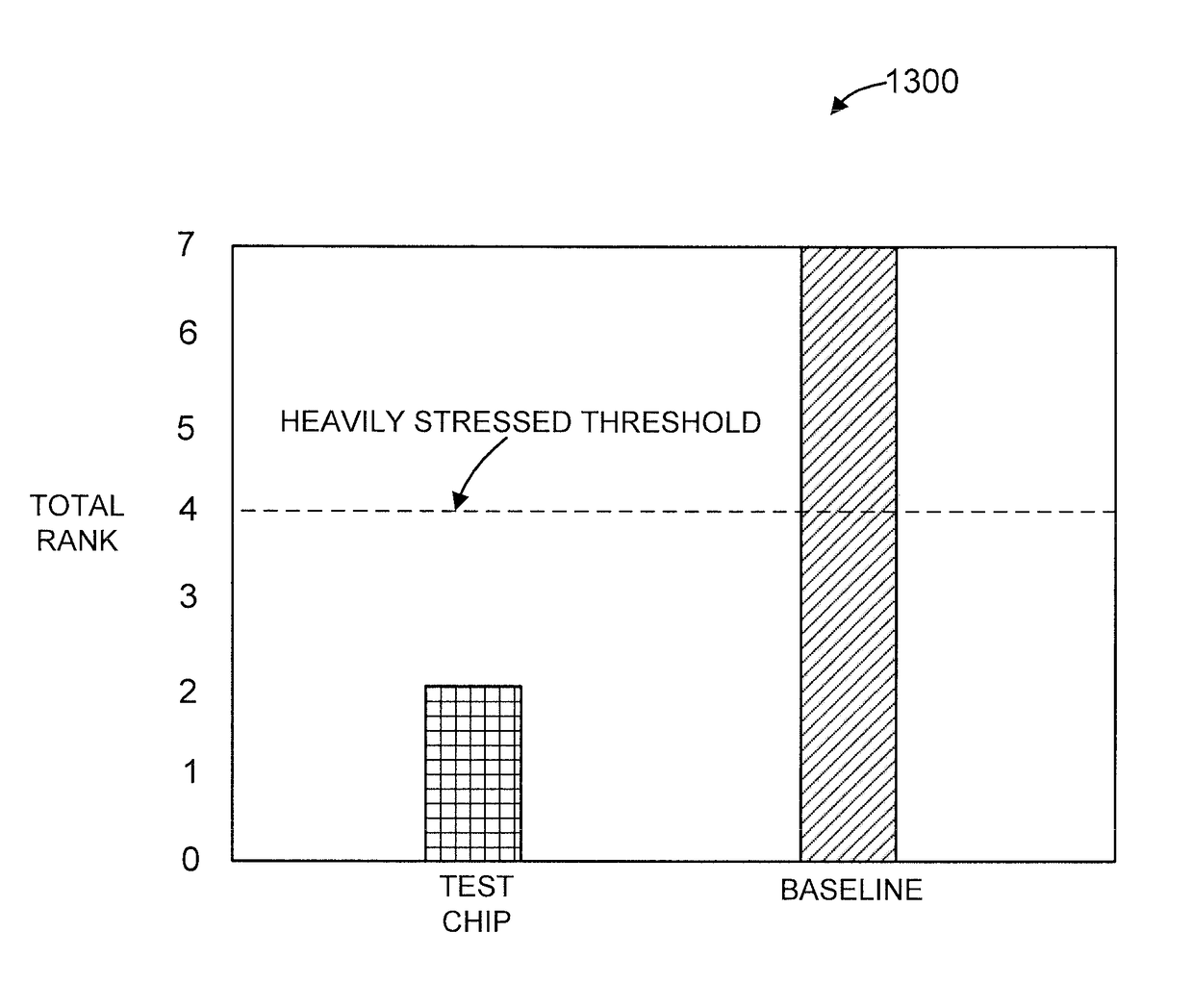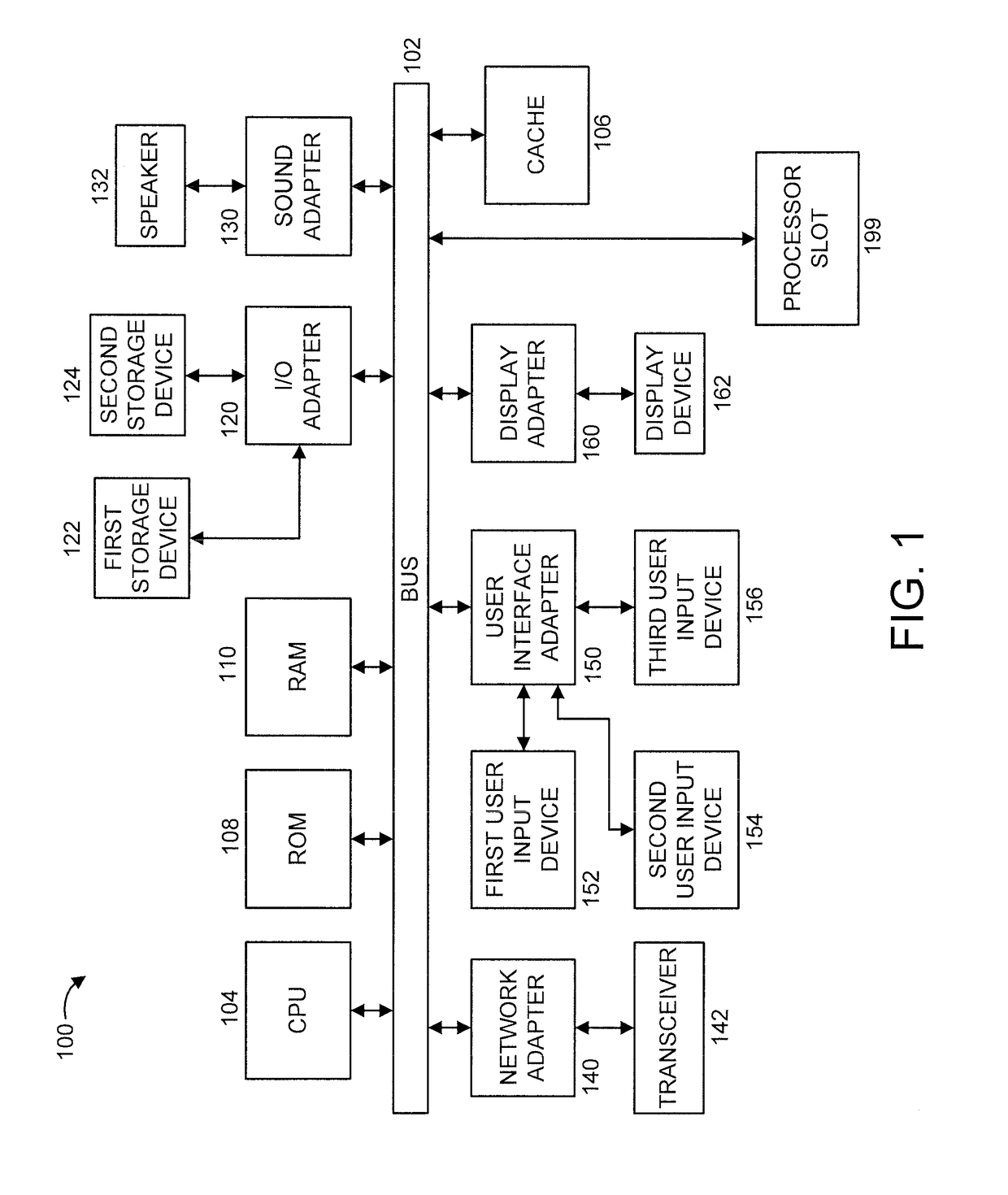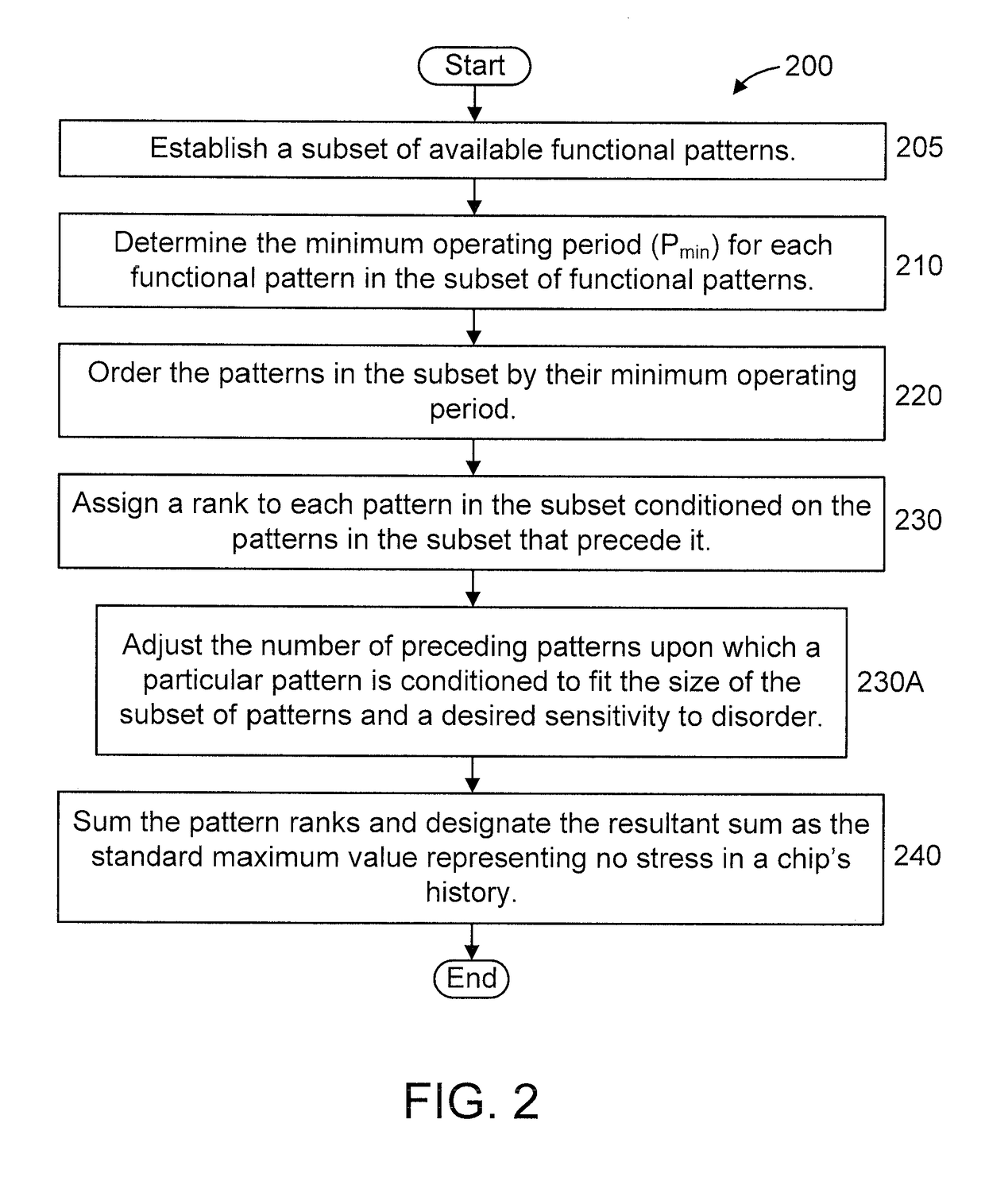Non-destructive analysis to determine use history of processor
a technology of use history and analysis method, applied in the field of processors, can solve the problems that the current techniques to determine the effect of stress history on a single chip are destructive, and regular reliability tests cannot be implemented
- Summary
- Abstract
- Description
- Claims
- Application Information
AI Technical Summary
Benefits of technology
Problems solved by technology
Method used
Image
Examples
Embodiment Construction
[0020]The present principles are directed to a non-destructive analysis to determine the use history of a processor. It is to be appreciated that the terms “processor” and “chip” are used interchangeably herein.
[0021]In an embodiment, a non-destructive method is provided to determine if a chip's stress (use) history is significant enough to affect its future performance.
[0022]In an embodiment, the present principles involve the use of a set of functional patterns of a chip to determine the stress state of the chip. It is to be appreciated that different patterns have different sets of transistors that are used, which should give each pattern a unique timing signature. Hence, in an embodiment, the order of the minimum operation periods of a subset of functional patterns is determined and compared to an accepted standard to determine the chip's stress state.
[0023]As a chip is stressed, especially if it is stressed heavily or non-uniformly, the order of the minimum operating period of ...
PUM
 Login to View More
Login to View More Abstract
Description
Claims
Application Information
 Login to View More
Login to View More - R&D
- Intellectual Property
- Life Sciences
- Materials
- Tech Scout
- Unparalleled Data Quality
- Higher Quality Content
- 60% Fewer Hallucinations
Browse by: Latest US Patents, China's latest patents, Technical Efficacy Thesaurus, Application Domain, Technology Topic, Popular Technical Reports.
© 2025 PatSnap. All rights reserved.Legal|Privacy policy|Modern Slavery Act Transparency Statement|Sitemap|About US| Contact US: help@patsnap.com



